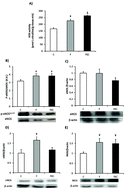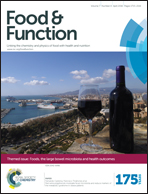Modifications in nitric oxide and superoxide anion metabolism induced by fructose overload in rat heart are prevented by (−)-epicatechin
Abstract
Fructose overload promotes functional and metabolic derangements in humans and in animal experimental models. Evidence suggests that dietary flavonoids have the ability to prevent/attenuate the development of metabolic diseases. In this work we investigated the effects of (−)-epicatechin on the modifications induced by fructose overload in the rat heart in terms of nitric oxide and superoxide metabolism. Male Sprague Dawley rats received 10% (w/v) fructose in the drinking water for 8 weeks, with or without (−)-epicatechin (20 mg per kg body weight per day) in the rat chow diet. These conditions of fructose overload did not lead to overt manifestations of heart hypertrophy or tissue remodeling. However, biochemical and molecular changes were observed and could represent the onset of functional alterations. (−)-Epicatechin prevented a compromised NO bioavailability and the development of oxidative stress produced by fructose overload essentially acting on superoxide anion metabolism. In this line, the increase in superoxide anion production, the overexpression of NOX2 subunit p47phox and of NOX4, the decrease in superoxide dismutase activity, and the higher oxidized/reduced glutathione ratio installed by fructose overload were absent in the rats receiving (−)-epicatechin. These results support the hypothesis that diets rich in (−)-epicatechin could prevent the onset and progression of heart dysfunctions associated with metabolic alterations.


 Please wait while we load your content...
Please wait while we load your content...